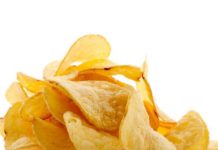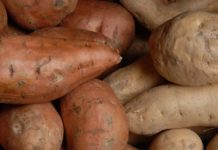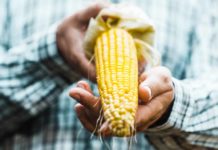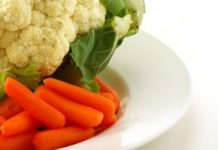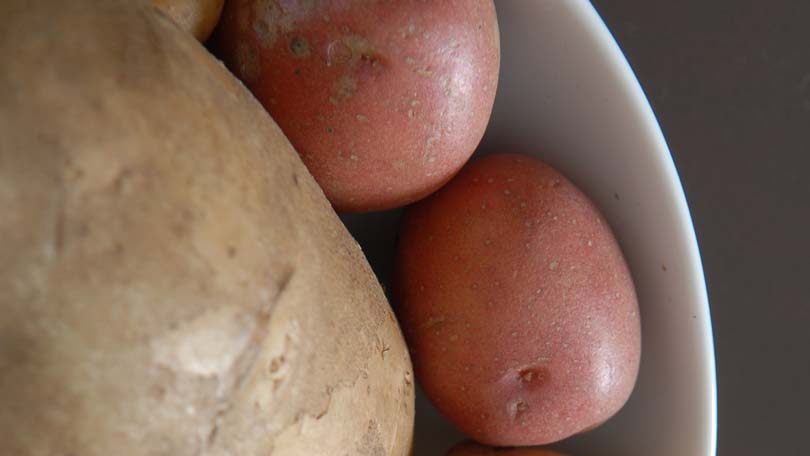
I say POE-TAY-TOE, you say POE-TAH-TOE, and some might even sadly say PAH-TAY-TER.” No matter how you pronounce them there is no sense denying the fact that potatoes are one of the most popular foods out there.
Ever since I was a little kid I have loved potatoes, particularly in the form of mashed potatoes, the ever delicious ultimate potato form…French fries, and, last but certainly not least, when they were cooked as scalloped potatoes. These tasty treats take me back to the many different family dinners, fast food stops, and holiday gatherings where they were consumed by me. Allowing me to not only remember this great food but also the great times and experiences that accompanied the meals where the certain form of potato was at it’s best. Other famous forms of prepared potatoes include baked potatoes, boiled, and steamed potatoes.
A lot of people might think that there are simply one kind of potato but in fact there a number of different potato varieties. An example of this is the sweet potato, which is not as common to one’s dinner plate and usually only shows up around Thanksgiving or Christmas time.
Below there are some interesting potato facts that I have listed. Read on to find out more about the potato as you discover their origin and their place in the world. By clicking on any of the highlighted words both above and below you will find adjoining articles with more information about the highlighted topic that has to do with potatoes on the whole.
Potato Facts:
i) Potatoes are the world’s fourth largest crop in terms of fresh produce, coming in behind only rice, wheat, and maize (corn). And they are the largest crop worldwide from the tuber family. When we think of the potato we often think of it as having strong European roots. Although this staple crop as we know it today has its most recent connections to Europe and European soil the very first potatoes actually originated in South America. After there was European contact with the Americas in the 1400’s and 1500’s the rest of the world was given access to the potato, allowing it to become the powerful staple field crop it is today.
ii) In 2005, according to the Food and Agriculture Organization, the worldwide production of potatoes equaled approximately 710 BILLION POUNDS, which is the equivalent of the weight of around 2700 CN Towers; making potatoes the fourth highest production crop in the world. However, the high water content in fresh potatoes compared to other crops can help to inflate these numbers.
iii) Potatoes are often said to be made up of “empty calories”. This is not true. Potatoes are mostly recognized for their carbohydrate content. This is one of the key food types that our body requires daily. The carbohydrates in potatoes are predominately starch. A small but significant amount of this starch is resistant to digestion in the stomach and small intestine and, therefore, enters into the large intestine essentially intact. This resistant starch is considered to act with the same positive benefits that fiber does in the body; such as providing bulk, protecting against colon cancer, and increasing satiety (feeling of being satisfied or full) to name a few. Potatoes also contain various important vitamins and minerals. By consuming a medium sized potato with the skin (therefore, most likely in the form of a baked potato) your body with receive almost 50% of it’s daily recommended amount of Vitamin C, around 20% of the potassium your body needs, and 10% of vitamin B6. Also included in this healthy spud are trace amounts of thiamin, riboflavin, folate, niacin, magnesium, phosphorus, iron, and zinc. The skin of the potato, as is fairly commonly known, is also a great source of fibre, providing an amount equivalent to most whole grain breads, cereals, and pastas. The old myth that all of a potato’s healthy elements are found in the skin is not true. Although the skin does house around half of the total dietary fibre of a potato, more than 50% of the healthy nutrients are found within the potato itself. The method by which potatoes are cooked can result in a significant difference in the nutrient availability of the spud. Newer potatoes offer fewer toxic chemicals giving them a strong advantage over other potatoes and making them the best source of nutrition. While peeled potatoes that have been stored for a long time have a lower nutritional value, but they still would contain good levels of potassium and vitamin B.
iv) When it comes to preparing potatoes there are many different ways to cook them and to use them as a part of your diet or fancy meal. You will find potatoes naked (no skin) or fully wrapped (skin on), you will find them chopped up or whole, and they will often be seasoned or unseasoned. Potatoes require to be cooked in some form as this breaks down the starch. Almost all potato dishes are served hot, however a few are served cold such as potato salad and potato chips. You can find potatoes being prepared in many different ways including some of the ones I have mentioned already. Common dishes and forms of potatoes that are consumed include: mashed potatoes, baked potatoes, French fries, potato chips, boiled or steamed potatoes, roasted potatoes, scalloped potatoes, home fries, hash browns, you’ll often find them in a stew, and they can be grated and formed into dumplings. Potatoes are also one of the few foods that can be covered and cooked in a microwave and not lose much of its nutritional value. From some of the above listed types of potato dishes we also get the foundation of many famous meals around the world including Britain’s own Shepherd’s pie and poutine, provided to us by the French.
v) Potatoes, believe it or not, can also be toxic to humans. They contain the toxic compounds known as glycoalkaloids which can cause headaches, diarrhea, cramping, and in very severe cases even comas or death. However, poisoning from potatoes occurs very rarely. In fact cooking potatoes at high temperatures, which is almost always the case, works to partly destroy these toxic compounds. Researchers and potato breeders are working on trying to grow potatoes with as little glycoalkaloids as possible. In the past, potatoes have also hurt humans in a different way; particularly the Irish during the great Irish potato famine when the potato, which was providing about 80 percent of the calories in each Irishman’s diet, had a crop failure. When a fungus destroyed almost the entire Irish crop of potatoes, nearly 1 of the 8 million people in Ireland died of starvation while 2 million more emigrated. Their population has still not recovered today.
vi) When potatoes are newly harvested they are generally cured to thicken the skin. Prior to this curing the skin of a potato is quite delicate and these types of potatoes known as “new potatoes” are said to be quite flavorful. Once harvested potatoes are either eaten by the gardener or farmer who has produced them or they are sent away to be packaged and stored for you the consumer. The storage of potatoes is an intricate process as specially designed storage areas need to be carefully designed to keep potatoes alive and to slow their decomposition.
Well, that was a lot of information about potatoes. I hope you have discovered what it is you were out to find involving these little spuds. For more information click on the bolded links to learn even more about this great vegetable.

